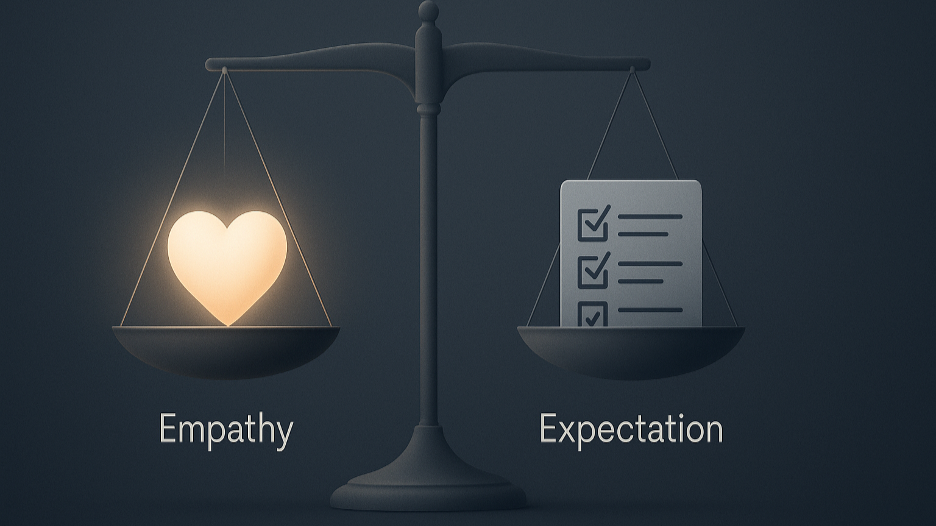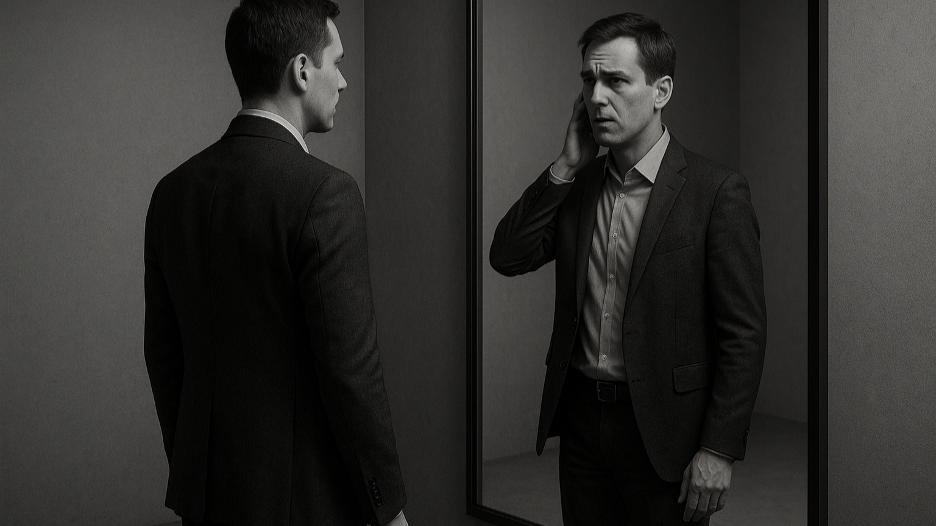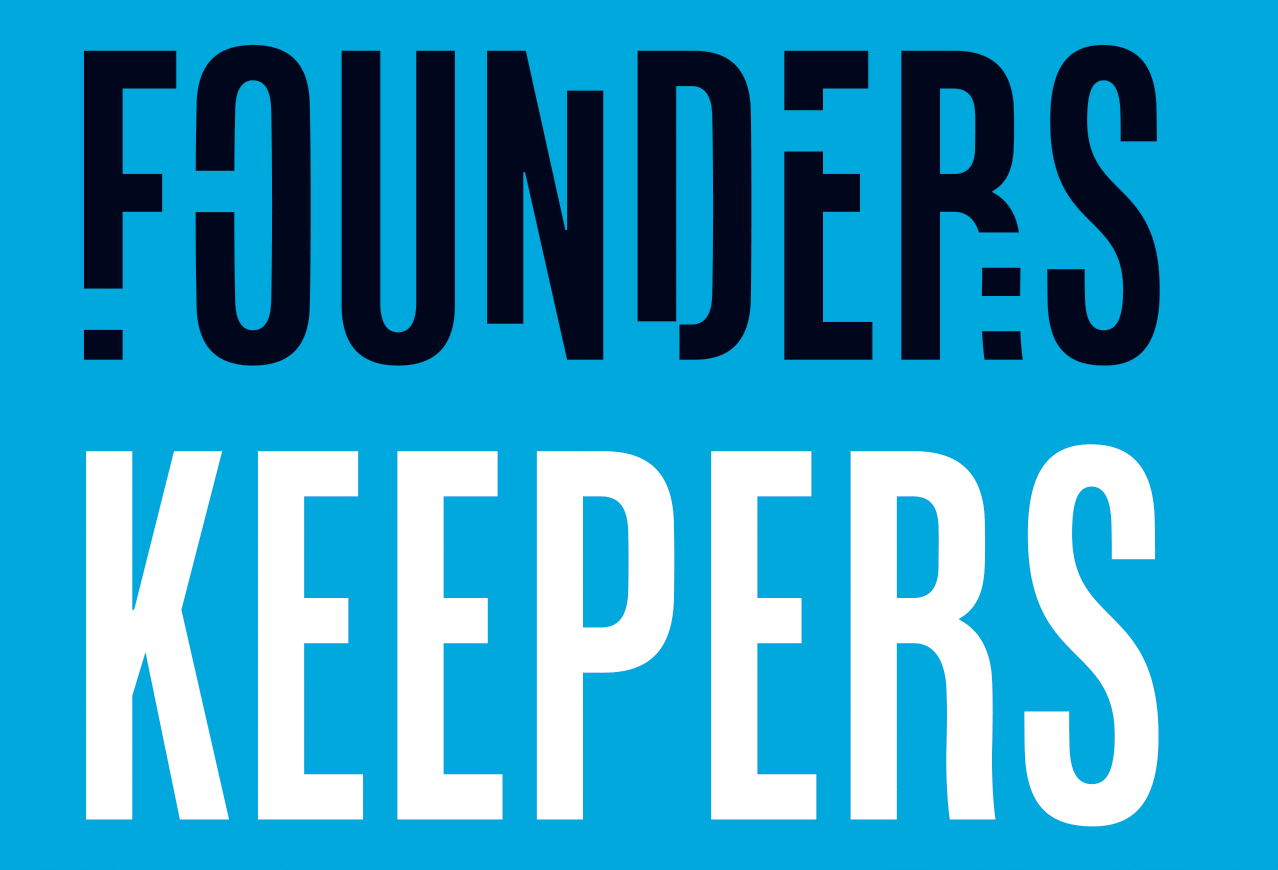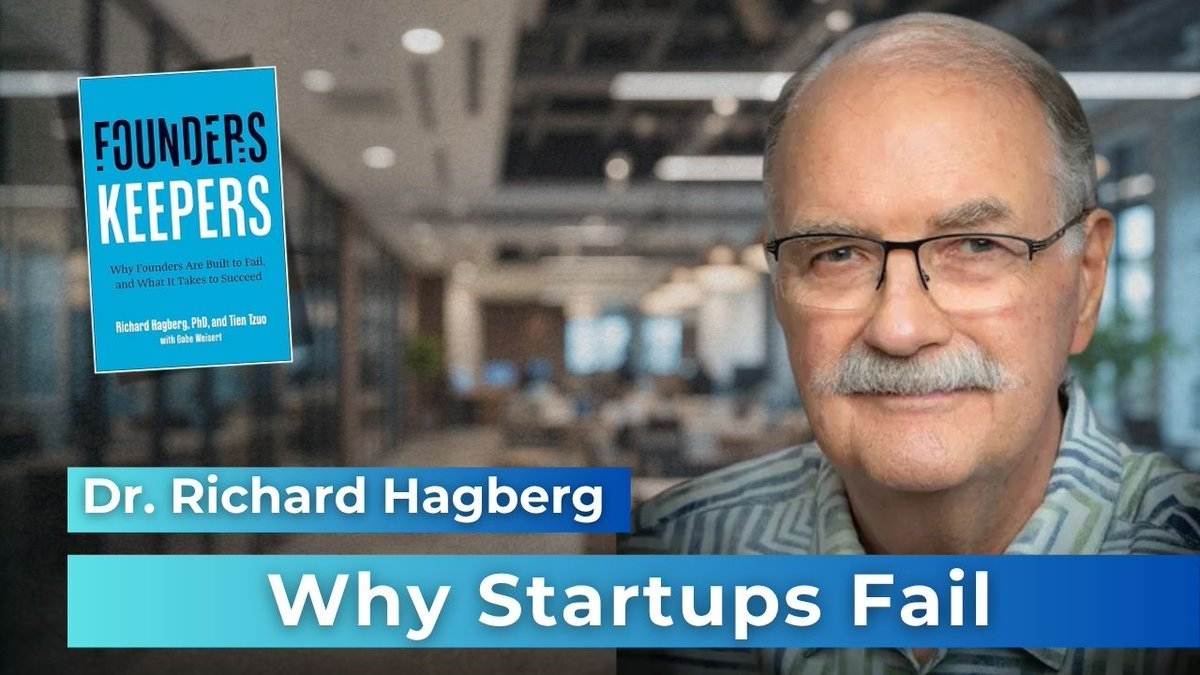Article
The Founder Blindspot: Your Startup’s Biggest Obstacle Might Be You
September 12, 2024

The journey of startup founders is marked by a powerful paradox: they possess a unique set of strengths that make them exceptional at launching businesses but also exhibit weaknesses that can limit their ability to scale leadership as their company grows. Based on detailed research and analysis of 122 founders, it's clear that these strengths are pivotal in the early stages but can become barriers later on if not addressed. Let's explore both sides of this coin—what makes founders special and how their traits can ultimately hold them back.
The Founder’s Superpowers: Fuel for Early Success
Visionary Thinking and Passion Founders are driven by bold, groundbreaking ideas. Their visionary mindset allows them to see potential opportunities that others might miss, and they are unwavering in their belief that they can turn their vision into reality. This passion and conviction serve as a magnetic force that draws in investors, employees, and early adopters, creating momentum at critical stages when resources are scarce. This drive, however, can also lead to a disconnect between big-picture thinking and day-to-day execution as the organization grows. Founders may continue to focus on new ideas without fully considering how to operationalize them, leaving teams unclear on how to proceed.
Adaptability and Comfort with Ambiguity In the chaotic early days of a startup, founders thrive in environments that others would find unsettling. Their ability to navigate ambiguity and make decisions quickly in the face of uncertainty is key to their success. Founders are comfortable pivoting when needed, relying on their gut instincts and a continuous flow of feedback from the market. This adaptability, though, can evolve into constant shifting as the organization scales, where the lack of stable direction may confuse teams and lead to inefficiencies. Decisiveness and Risk-Taking Founders are known for their ability to make bold, swift decisions with incomplete data. This trait is essential in fast-paced environments where delayed action can mean lost opportunities. Their willingness to take risks often separates them from more traditional leaders who may require extensive data and time before committing to decisions. However, as the company grows, this instinctive decision-making can backfire when complex decisions require deeper analysis and input from various stakeholders. The very decisiveness that powered early success can become impulsive or reckless in a larger, more complex environment.
Creativity and Problem-Solving One of the most defining characteristics of founders is their creativity. Often referred to as “idea machines,” they consistently generate innovative solutions to complex problems. This creativity goes beyond product development; it extends to logistical problem-solving, resource maximization, and team management. Founders are relentless in seeking new approaches, which drives innovation. However, in a growing organization, the balance between creativity and execution becomes critical. Founders may struggle to transition from creative ideation to structured execution, leading to half-baked projects or teams left scrambling to keep up with a flurry of new initiatives.
Resilience and Self-Confidenc e Startup life is filled with challenges, and founders’ resilience is a cornerstone of their success. They are able to push through long hours, setbacks, and failures without losing sight of their ultimate goals. This mental toughness inspires confidence in their teams, investors, and other stakeholders, keeping the company moving forward despite adversity. However, this unshakeable confidence can lead to blind spots. Founders may become so focused on their vision that they fail to listen to feedback or adjust course when necessary, resulting in tunnel vision or decisions that are out of sync with the company’s actual needs.
The Scaling Struggle: When Strengths Become Limitations However, the very strengths that make founders successful in the beginning stages can become obstacles as the organization scales.
Micromanagement and Control Issues Founders often struggle to delegate effectively as their startups grow. The hands-on, all-in approach that is vital in the early days becomes a barrier when the team expands. Founders may find it difficult to relinquish control, continuing to involve themselves in every aspect of the business—even in areas where they lack expertise. This micromanagement creates bottlenecks, stifling employee autonomy and slowing decision-making processes. As the organization scales, the founder’s refusal to step back and trust their team undermines their own ability to lead effectively at a higher level.
Impulsive Decision-Making In the early stages, the founder’s ability to make quick decisions was an asset. However, as the organization grows in size and complexity, this decisiveness can become impulsive. Founders may make snap decisions without considering the broader implications, leading to costly mistakes. The lack of structured decision-making processes can leave employees feeling whiplashed by constantly changing priorities, reducing overall organizational efficiency.
Overcommitment and Burnout Founders’ passion and drive often translate into overcommitment, where they take on too much responsibility, refuse to delegate, and expect their teams to work with the same intensity. While this level of commitment is necessary in the early days, it can lead to burnout for both the founder and their employees as the company scales. Founders who fail to recognize this risk create an unsustainable work culture, prioritizing effort over strategic growth, which ultimately damages long-term performance.
Tunnel Vision and Short-Term Focus Founders can become disconnected from the day-to-day operations as the company grows, leading to a lack of awareness of team morale, operational efficiency, and long-term health. Their tendency to react to immediate challenges rather than plan for the future often results in missed opportunities for scaling. Strategic long-term planning becomes secondary to solving today’s crisis, which is unsustainable as the organization grows.
Conflict Avoidance and Accountability Gaps Many founders are conflict-averse, avoiding difficult conversations or deferring critical decisions about underperforming team members. This conflict avoidance creates a lack of accountability, where poor performance goes unchecked, and team tensions simmer beneath the surface. As the company scales, the absence of clear conflict-resolution processes and a culture of accountability undermines trust in leadership and diminishes overall team performance.
Lack of Structure and Dependability Founders are known for their high-energy, chaotic approach to work, but as the company expands, this lack of structure becomes a liability. Missing deadlines, shifting priorities, and operating without clear processes erode trust and diminish the organization’s ability to operate efficiently at scale. As a company grows, founders need to embrace structure—both in their leadership and in the systems they put in place—to ensure that their teams can execute consistently and effectively. The Founder’s Paradox: Bridging the Gap The key to overcoming these challenges lies in a founder's ability to recognize that what worked in the early days won’t sustain them through scaling. Successful founders evolve their leadership style by:
Conclusion: From Founder to Leader
The qualities that make founders exceptional at starting companies can hinder their ability to lead as their ventures grow. By recognizing these potential pitfalls and making intentional changes, founders can bridge the gap between being a scrappy startup hero and becoming a scalable leader. Based on statistical analysis and feedback from 122 founders, this research highlights the founder’s paradox: to succeed long-term, the same passion and drive that launched their company must evolve into a more structured, strategic approach to leadership.
Your success as a founder isn’t just about launching—it’s about growing, sustaining, and scaling your leadership as your company reaches new heights.
The Founder’s Superpowers: Fuel for Early Success
Visionary Thinking and Passion Founders are driven by bold, groundbreaking ideas. Their visionary mindset allows them to see potential opportunities that others might miss, and they are unwavering in their belief that they can turn their vision into reality. This passion and conviction serve as a magnetic force that draws in investors, employees, and early adopters, creating momentum at critical stages when resources are scarce. This drive, however, can also lead to a disconnect between big-picture thinking and day-to-day execution as the organization grows. Founders may continue to focus on new ideas without fully considering how to operationalize them, leaving teams unclear on how to proceed.
Adaptability and Comfort with Ambiguity In the chaotic early days of a startup, founders thrive in environments that others would find unsettling. Their ability to navigate ambiguity and make decisions quickly in the face of uncertainty is key to their success. Founders are comfortable pivoting when needed, relying on their gut instincts and a continuous flow of feedback from the market. This adaptability, though, can evolve into constant shifting as the organization scales, where the lack of stable direction may confuse teams and lead to inefficiencies. Decisiveness and Risk-Taking Founders are known for their ability to make bold, swift decisions with incomplete data. This trait is essential in fast-paced environments where delayed action can mean lost opportunities. Their willingness to take risks often separates them from more traditional leaders who may require extensive data and time before committing to decisions. However, as the company grows, this instinctive decision-making can backfire when complex decisions require deeper analysis and input from various stakeholders. The very decisiveness that powered early success can become impulsive or reckless in a larger, more complex environment.
Creativity and Problem-Solving One of the most defining characteristics of founders is their creativity. Often referred to as “idea machines,” they consistently generate innovative solutions to complex problems. This creativity goes beyond product development; it extends to logistical problem-solving, resource maximization, and team management. Founders are relentless in seeking new approaches, which drives innovation. However, in a growing organization, the balance between creativity and execution becomes critical. Founders may struggle to transition from creative ideation to structured execution, leading to half-baked projects or teams left scrambling to keep up with a flurry of new initiatives.
Resilience and Self-Confidenc e Startup life is filled with challenges, and founders’ resilience is a cornerstone of their success. They are able to push through long hours, setbacks, and failures without losing sight of their ultimate goals. This mental toughness inspires confidence in their teams, investors, and other stakeholders, keeping the company moving forward despite adversity. However, this unshakeable confidence can lead to blind spots. Founders may become so focused on their vision that they fail to listen to feedback or adjust course when necessary, resulting in tunnel vision or decisions that are out of sync with the company’s actual needs.
The Scaling Struggle: When Strengths Become Limitations However, the very strengths that make founders successful in the beginning stages can become obstacles as the organization scales.
Micromanagement and Control Issues Founders often struggle to delegate effectively as their startups grow. The hands-on, all-in approach that is vital in the early days becomes a barrier when the team expands. Founders may find it difficult to relinquish control, continuing to involve themselves in every aspect of the business—even in areas where they lack expertise. This micromanagement creates bottlenecks, stifling employee autonomy and slowing decision-making processes. As the organization scales, the founder’s refusal to step back and trust their team undermines their own ability to lead effectively at a higher level.
Impulsive Decision-Making In the early stages, the founder’s ability to make quick decisions was an asset. However, as the organization grows in size and complexity, this decisiveness can become impulsive. Founders may make snap decisions without considering the broader implications, leading to costly mistakes. The lack of structured decision-making processes can leave employees feeling whiplashed by constantly changing priorities, reducing overall organizational efficiency.
Overcommitment and Burnout Founders’ passion and drive often translate into overcommitment, where they take on too much responsibility, refuse to delegate, and expect their teams to work with the same intensity. While this level of commitment is necessary in the early days, it can lead to burnout for both the founder and their employees as the company scales. Founders who fail to recognize this risk create an unsustainable work culture, prioritizing effort over strategic growth, which ultimately damages long-term performance.
Tunnel Vision and Short-Term Focus Founders can become disconnected from the day-to-day operations as the company grows, leading to a lack of awareness of team morale, operational efficiency, and long-term health. Their tendency to react to immediate challenges rather than plan for the future often results in missed opportunities for scaling. Strategic long-term planning becomes secondary to solving today’s crisis, which is unsustainable as the organization grows.
Conflict Avoidance and Accountability Gaps Many founders are conflict-averse, avoiding difficult conversations or deferring critical decisions about underperforming team members. This conflict avoidance creates a lack of accountability, where poor performance goes unchecked, and team tensions simmer beneath the surface. As the company scales, the absence of clear conflict-resolution processes and a culture of accountability undermines trust in leadership and diminishes overall team performance.
Lack of Structure and Dependability Founders are known for their high-energy, chaotic approach to work, but as the company expands, this lack of structure becomes a liability. Missing deadlines, shifting priorities, and operating without clear processes erode trust and diminish the organization’s ability to operate efficiently at scale. As a company grows, founders need to embrace structure—both in their leadership and in the systems they put in place—to ensure that their teams can execute consistently and effectively. The Founder’s Paradox: Bridging the Gap The key to overcoming these challenges lies in a founder's ability to recognize that what worked in the early days won’t sustain them through scaling. Successful founders evolve their leadership style by:
- Embracing Delegation : Letting go of control and trusting their teams to make decisions without their constant oversight.
- Balancing Intuition with Data : Shifting from gut-driven decisions to a more data-informed approach, especially as complexity increases.
- Prioritizing Long-Term Strategy : Moving beyond day-to-day firefighting to set a clear long-term vision and creating scalable systems and processes.
- Fostering Communication and Accountability : Encouraging open dialogue, resolving conflicts head-on, and ensuring accountability across all levels of the organization.
- Investing in Personal and Team Well-Being : Managing stress effectively and avoiding burnout by creating a culture of recognition and support.
Conclusion: From Founder to Leader
The qualities that make founders exceptional at starting companies can hinder their ability to lead as their ventures grow. By recognizing these potential pitfalls and making intentional changes, founders can bridge the gap between being a scrappy startup hero and becoming a scalable leader. Based on statistical analysis and feedback from 122 founders, this research highlights the founder’s paradox: to succeed long-term, the same passion and drive that launched their company must evolve into a more structured, strategic approach to leadership.
Your success as a founder isn’t just about launching—it’s about growing, sustaining, and scaling your leadership as your company reaches new heights.
share this
Related Articles
Related Articles

The Nicest Boss in the World He was adored. He remembered birthdays, checked in on people’s families, and stayed late helping fix slides no one asked him to touch. His team called him “the best boss we’ve ever had.” He was also running on fumes. Behind the warm smile was a leader quietly burning out — drowning in everyone else’s problems, too empathetic for his own good. If you’re a leader who prides yourself on caring deeply, this might sting a little: empathy, taken too far, becomes control in disguise. Empathy’s Secret Shadow Empathy is essential for leadership. It builds loyalty, safety, and trust. But the same trait that makes people feel seen can also make them dependent. When you can’t tolerate someone else’s discomfort, you start protecting them from it. You step in to fix, to soothe, to rescue. It looks noble. It feels generous. But it quietly steals agency — theirs and yours. Your team stops growing because you’re doing their emotional labor. You stop leading because you’re managing feelings instead of outcomes. That’s the hidden cost of care. The Emotional Guilt Loop Over-empathetic leaders live in a constant tug-of-war between compassion and guilt. They think: “They’re already stretched — I can’t pile more on.” “If I push harder, I’ll seem uncaring.” “I’ll just do it myself; it’s easier.” Sound familiar? That’s not empathy anymore. That’s guilt masquerading as kindness. And guilt makes terrible business decisions. Because guilt doesn’t guide you toward what’s right. It just steers you away from what feels uncomfortable. A Founder’s Story One founder I coached, let’s call her Lina, led with heart. She built her company around “people first.” And she meant it. But somewhere along the way, “people first” turned into “me last.” She couldn’t say no. She kept saving underperformers, approving vacations during crunch time, rewriting others’ work to spare them stress. Her team adored her — until they didn’t. Because beneath her helpfulness was quiet resentment. And resentment always leaks. The breakthrough came when she realized something simple but hard: “I was protecting people from learning the hard parts of growth.” That’s when she started leading again instead of parenting. When Caring Becomes Control Here’s the paradox: the more you care, the more you risk over-controlling. You jump in to fix not because you don’t trust them, but because you feel for them. It’s empathy turned inward — I can’t stand watching them struggle. But leadership isn’t about eliminating discomfort. It’s about using it wisely. People grow by stretching, not by being spared. When you save someone from every failure, you’re also saving them from competence. The Biology of Burnout Chronic empathy triggers chronic stress. When you absorb other people’s emotions all day, your nervous system never gets a break. You start mirroring everyone’s anxiety like an emotional amplifier. Your brain thinks you’re in crisis — even when you’re not. That’s why over-caring leaders are often the first to burn out. Their compassion becomes constant cortisol. The irony? The leaders who want to create safety for others end up unsafe themselves. How to Care Without Carrying Feel, then filter. It’s okay to feel someone’s frustration. Just don’t keep it. Ask: “Is this mine to hold?” Help through accountability. Say, “I know this is tough, and I also need you to take ownership.” The and matters. Let discomfort be developmental. When a team member struggles, resist rescuing. Stay present, not protective. Coach before you comfort. Instead of “Don’t worry,” try, “What do you think your next move is?” Reframe empathy as empowerment. Caring isn’t about absorbing pain; it’s about believing people can handle it. Funny but True One exec I worked with told me, “Every time I stop helping, I feel like a jerk.” I said, “No — you feel like a leader. It just takes a while to tell the difference.” He laughed and said, “So… you’re telling me leadership feels bad at first?” I said, “Exactly. Growth always does.” The Cultural Ripple Effect When leaders overfunction, teams underfunction. When leaders hold space instead of taking space, teams rise. Empathy should expand others, not consume you. The healthiest cultures balance care and candor — support and stretch. They normalize struggle as part of the process instead of something to be hidden or rescued. That’s what real compassion looks like in motion. The Maturity of Tough Empathy Empathy without boundaries is exhaustion. Empathy with boundaries is wisdom. The mature version of empathy doesn’t say, “I’ll protect you.” It says, “I believe you can handle this — and I’ll walk beside you while you do.” That’s not cold. That’s developmental. Your Challenge This Week Notice where you’re rescuing someone instead of coaching them. Pause before you step in. Ask yourself, Am I helping because they need it — or because I need to feel helpful? Then take one small risk: let them handle it. They’ll probably surprise you. And you’ll feel lighter than you have in months. Final Word Caring is beautiful. It’s what makes you human. But unchecked empathy turns leaders into emotional pack mules — carrying what was never theirs to bear. Real leadership is still full of heart. It just remembers that compassion without accountability isn’t love. It’s fear. And the moment you stop rescuing everyone, you finally start freeing them — and yourself.s)

The Smart Leader’s Blind Spot It’s strange how often the smartest people make the worst decisions under pressure. They don’t lose IQ. They lose perspective. I’ve seen this happen more times than I can count. A sharp, decisive executive starts second-guessing every move. They overanalyze, overwork, and overcontrol — all in the name of being “thorough.” They think they’re being rational. But underneath the spreadsheets and meetings is something far less logical. It’s fear. The Fear That Doesn’t Look Like Fear We think of fear as panic — sweating, shaking, obvious. But most leadership fear hides behind competence. It shows up as perfectionism, busyness, overcommitment, indecision. It sounds like, “Let’s get more data.” “Let’s not rush this.” “Let’s keep this one close.” That’s not analysis. That’s avoidance with a better vocabulary. When fear runs the show, the goal subtly shifts from making the right decision to avoiding the wrong one. And those two things are worlds apart. The Cost of Fear-Based Leadership When leaders operate from fear, everything tightens. They stop listening. They rush to defend. They play small when the company needs boldness. They keep people who are loyal over people who are competent — because loyalty feels safer. And here’s the real tragedy: the team starts copying the fear. They become cautious, compliant, quiet. Pretty soon, no one’s leading anymore. They’re all managing risk — mostly emotional risk. A CEO’s Moment of Truth One CEO I coached — brilliant, confident, deeply human — was terrified of being wrong in front of his board. He masked it well. On the outside: decisive. Inside: a constant hum of anxiety. After a tough quarter, he admitted, “I realized half my decisions weren’t based on strategy — they were based on protecting my image.” That moment of honesty was the start of his maturity curve. Once he could name the fear, it stopped running his show. He didn’t become fearless. He became aware. And awareness is what turns reaction into wisdom. Why Fear Feels Safer Than Clarity Fear has a strange way of convincing us it’s caution. Caution whispers, “Slow down and look.” Fear screams, “Don’t move.” The first sharpens judgment. The second paralyzes it. And the more we listen to fear, the more it disguises itself as prudence. That’s why emotional maturity isn’t about suppressing fear. It’s about being able to say, “Ah, that’s fear talking — not fact.” How Fear Distorts the Mind Here’s what happens when fear hijacks leadership: Tunnel vision: You fixate on the immediate threat and forget the big picture. Confirmation bias: You start looking for data that validates your anxiety. Short-termism: You make safe decisions that feel good now and cause pain later. Blame shifting: You protect your ego by pushing ownership outward. The mind gets smaller. The leader gets reactive. The company gets stuck. The Maturity Shift Emotional maturity isn’t about being unshakable. It’s about staying curious in the presence of fear. Mature leaders don’t pretend they’re fearless. They just don’t let fear make the decisions. They pause, breathe, and ask, “What part of this is data, and what part is my insecurity talking?” That single question can change everything. A Founder’s Story A founder I worked with once said, “I’m not afraid — I just have high standards.” But as we unpacked it, he realized those “high standards” were actually a way to control outcomes. He feared disappointment — his own and others’. When he finally stopped trying to protect his reputation and started protecting his clarity, his decisions got faster and cleaner. The business didn’t just grow — it started breathing again. Because when you stop trying to look right, you finally have room to be right. Funny, But True I once asked a CEO what he’d do differently if he weren’t afraid of failing. He said, “Probably the same things I’m doing now — just with less Advil.” That’s the thing: most leaders already know what to do. Fear just makes it hurt more. How to Lead Without Fear (Even When It’s There) Name it early. The sooner you recognize fear, the less power it has. Ask yourself, “What’s the story fear’s telling me right now?” Reframe mistakes as tuition. You’ll still pay for errors — might as well learn something from them. Separate identity from outcome. A bad decision doesn’t mean a bad leader. It means a leader who’s still learning — like everyone else. Keep one truth-teller nearby. Someone who loves you enough to tell you when you’re acting from ego. Practice micro-bravery. Tell one hard truth a day. Say “I don’t know” once a week. Let discomfort become strength training. The Paradox of Fear Fear doesn’t make you weak. It means you care. But if you never face it, it becomes your compass — and it always points backward. Courage, maturity, clarity — they’re not opposites of fear. They’re what happen when you stop running from it. Your Challenge This Week Next time you feel that knot in your stomach — before a board meeting, a tough conversation, a high-stakes call — pause. Ask yourself: What am I afraid might happen? Then ask: What might happen if I act from clarity instead of fear? That’s not therapy. That’s leadership hygiene. Final Word The mark of maturity isn’t fearlessness. It’s self-awareness. You can’t control your fear. But you can choose whether it sits in the driver’s seat or the passenger’s. Great leaders don’t wait for fear to disappear. They lead with it beside them — quietly, respectfully — but never in charge.

The Charisma Illusion Charisma gets all the press. It fills conference rooms, wins funding rounds, and dominates the LinkedIn highlight reel. We treat it like the gold standard of leadership — as if volume equals vision. But charisma is a sugar high. It spikes energy, then crashes trust. Composure, on the other hand — quiet, grounded, centered composure — is the kind of influence that lasts. It doesn’t light up a room; it settles one. When things go sideways, it’s not the charismatic leader people look for. It’s the calm one. The Crisis Test Picture this. The product just failed. The client’s furious. Your team’s pacing like trapped cats. Two leaders walk in. One storms into action — loud, fast, “What the hell happened here?” The other walks in slowly, looks around, and says, “Okay, let’s breathe. What do we know so far?” The first one gets attention. The second one gets results. That’s emotional geometry — the calmest person in the room reshapes everyone else’s state. Why Calm Is the Real Power When you stay composed, you’re not just managing your emotions — you’re regulating the entire system. Here’s the neuroscience behind it: people mirror the nervous system of whoever has the most authority. If you’re grounded, they sync to your rhythm. If you’re frantic, they sync to that instead. You don’t need to lecture anyone on resilience. You just have to model it. It’s not charisma that makes people trust you; it’s the quiet sense that you’re not going to lose your mind when things get hard. Charisma’s Half-Life Charisma is a spark. It can ignite a team — but if there’s no composure beneath it, the whole thing burns out. You’ve seen this movie before: the leader who rallies everyone with a passionate all-hands speech, then disappears into reaction mode when things get messy. Charisma without composure is like caffeine without sleep. You’re awake, but you’re not steady. Composure doesn’t get the applause. It gets the loyalty. A Founder’s Story One founder I worked with — I’ll call him David — was known for being a “high-voltage” guy. He could pitch an investor, fire up a crowd, or talk anyone into anything. But his team? They were walking on eggshells. His energy filled every room, but it left no oxygen for anyone else. During one session, I asked, “When you raise your voice, what happens to theirs?” He went quiet. That was the moment he understood that his passion — the thing he was most proud of — had become the team’s anxiety. A year later, his team described him differently: “He’s still intense, but steady. We trust him more now.” He didn’t lose charisma; he layered it with composure. The Calm Before the Influence Here’s what composure actually looks like: You listen longer. Because real influence starts with attention, not argument. You breathe before reacting. That pause isn’t weakness; it’s power management. You let silence do the work. Charisma fills every space; composure creates space for others to step in. You own your tone. You realize your sighs, your speed, your face — they’re all communication tools whether you intend them or not. You choose steadiness over certainty. People don’t need you to know everything. They just need to know you’re okay not knowing. Funny But True A client once told me, “When I’m calm in a meeting, people assume I’m hiding something.” I said, “Good. Let them wonder.” That’s how unfamiliar calm has become. In some cultures, composure looks radical — even suspicious. But it’s exactly what people crave in a world that never shuts up. Why Charisma Is Easier (and More Addictive) Charisma gets feedback. You see the energy rise, you feel the applause. It’s visible. Composure feels invisible — until you lose it. No one thanks you for staying calm during a crisis. But they remember it when deciding whether to follow you into the next one. That’s why maturity in leadership means getting comfortable with the quiet wins — the meeting that didn’t spiral, the argument that didn’t happen, the team that stayed focused because you did. The Emotional Geometry in Practice Think of composure as geometry because emotions move through space. When you enter a room, you alter its emotional shape. If you radiate calm, people’s shoulders drop. Their thinking widens. They start contributing. If you radiate stress, the room contracts. People shrink. Ideas vanish. Influence isn’t what you say. It’s the energy field you create. Your Challenge This Week Before your next high-stakes meeting, pause outside the door. Take one deep breath and ask yourself: What energy does this room need from me right now? Then bring only that. Nothing more. You’ll be amazed how fast everything slows down when you do. Final Word Charisma captures attention. Composure builds trust. One is about how loudly you shine; the other is about how steadily you glow. The leader who can stay centered when everyone else is spinning doesn’t just have influence — they are the influence. And that’s the kind of power that never burns out.
STAY UP TO DATE
GET PATH'S LATEST
Receive bi-weekly updates from the church, and get a heads up on upcoming events.
Contact Us








